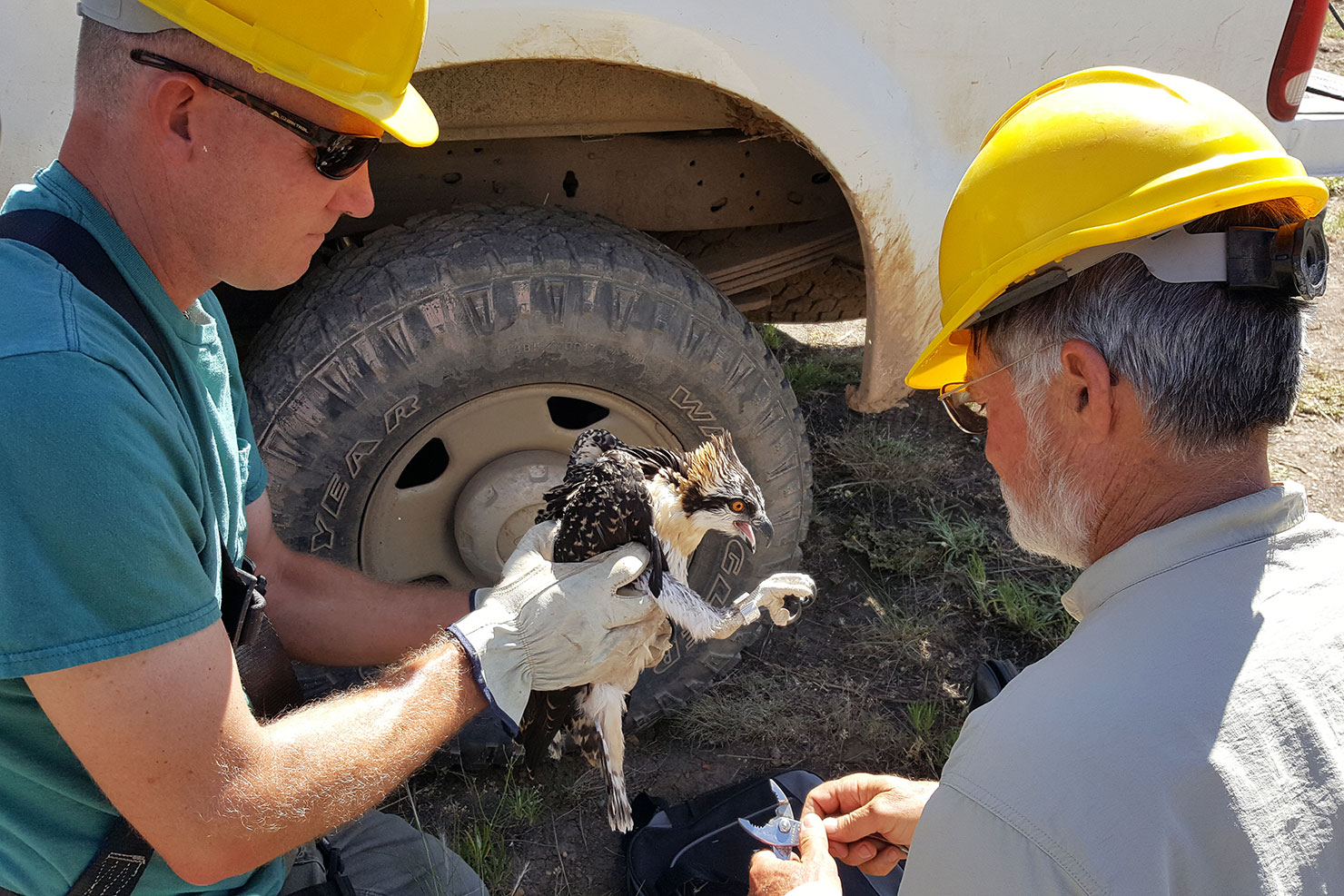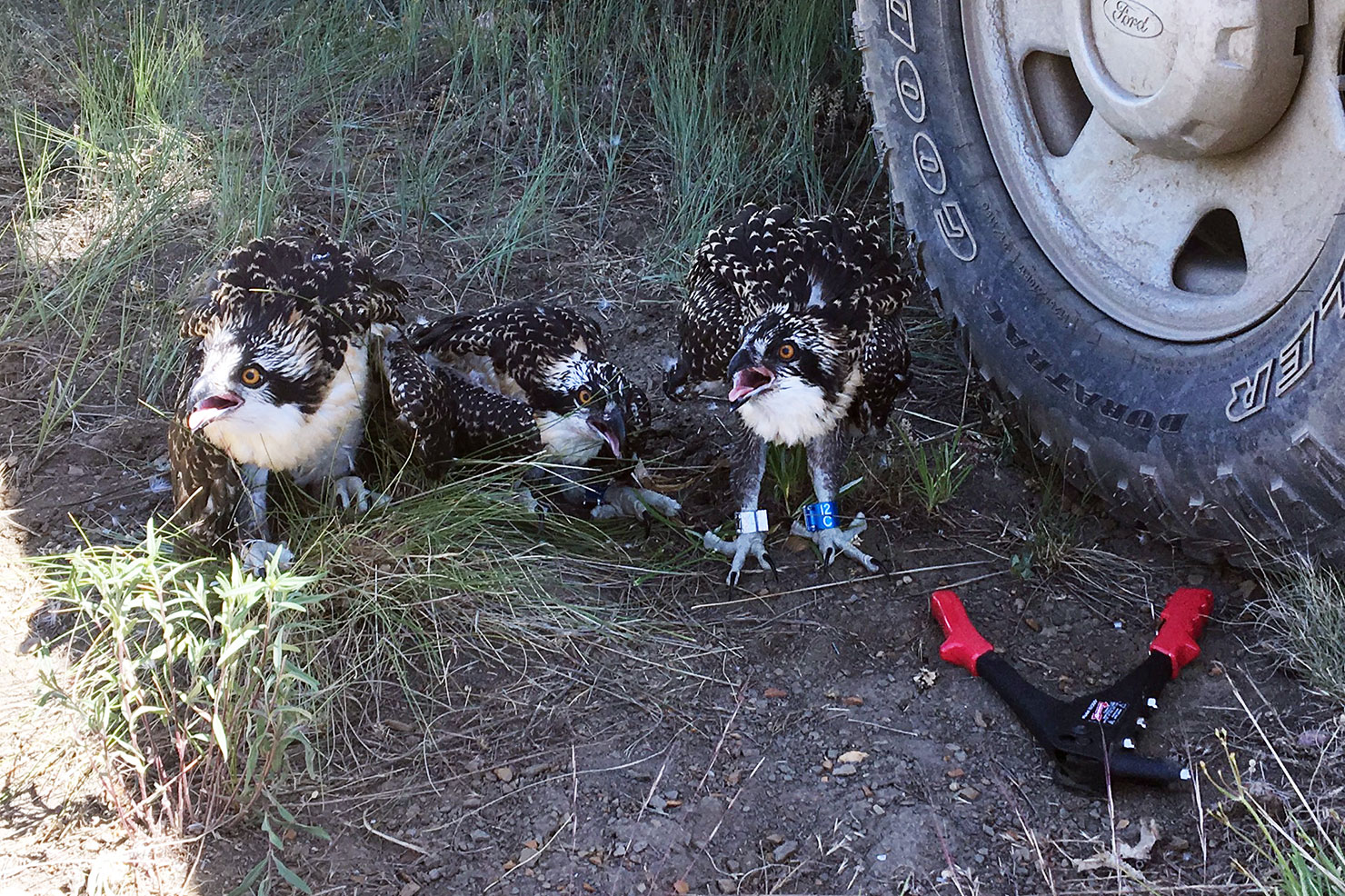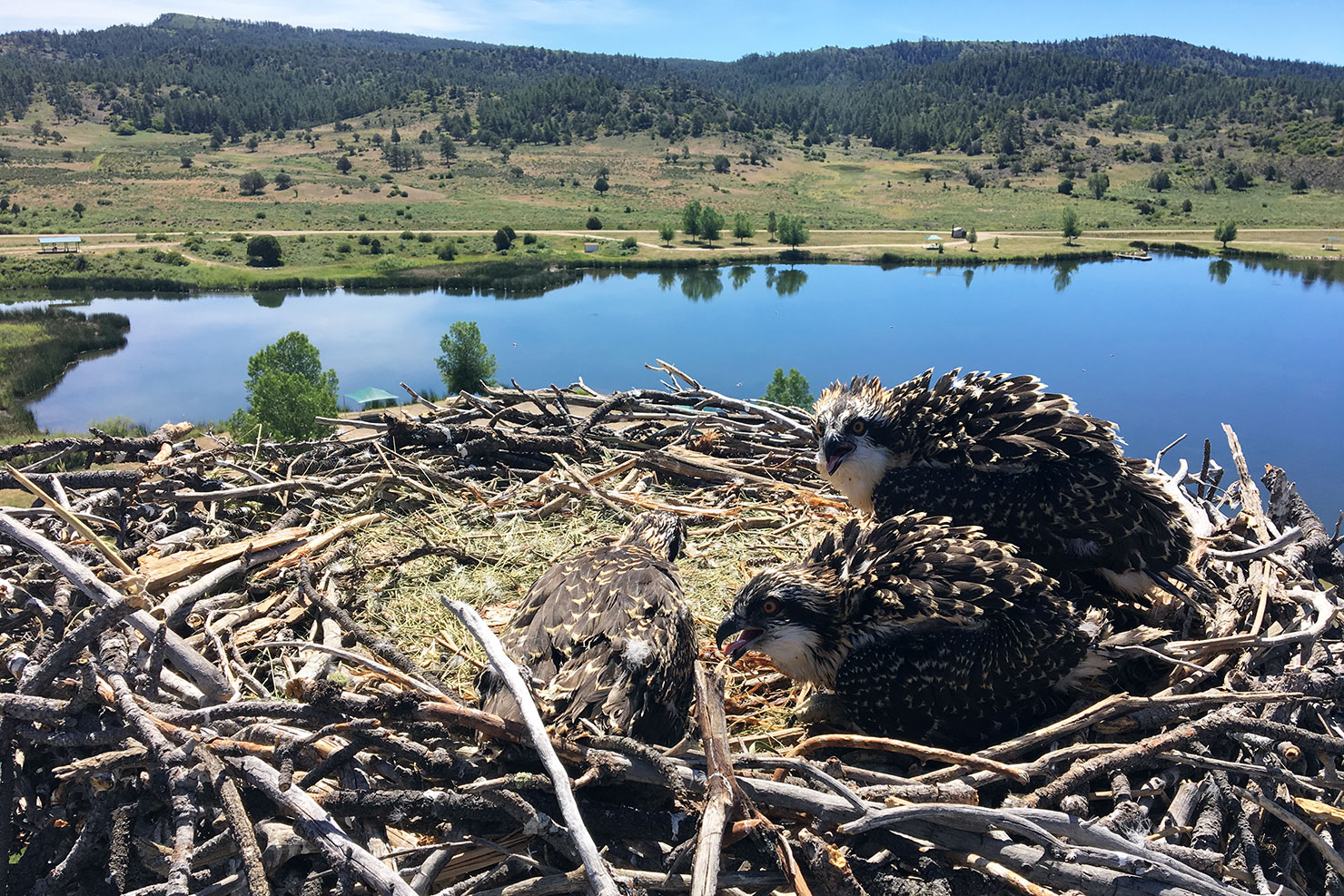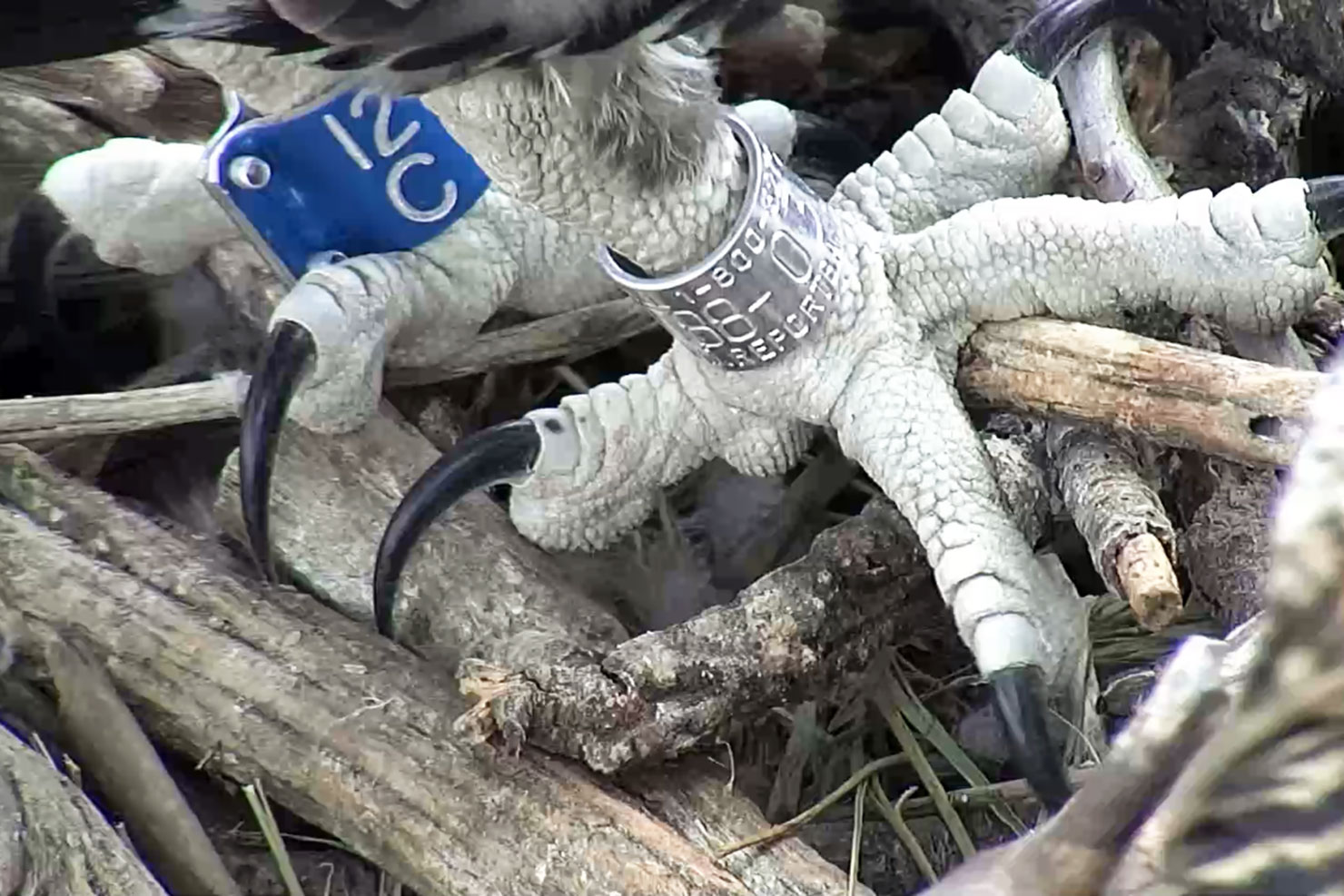Earlier this year, the Southern Ute Indian Tribe’s Division of Wildlife Resource Management team installed a high definition 1080p camera to observe the osprey nest at Lake Capote — streaming live coverage of the resident raptors and their activities. Since that time, the mating pair have successfully hatched their eggs and are raising three young birds. Wildlife staff recently tagged the younger osprey with leg bands.
Speaking with Wildlife Resource Management Division Head Steve Whitman and Wildlife Technician Jon Broholm, The Southern Ute Drum fielded a Q & A with the wildlife experts regarding the successes and challenges of the recently introduced web cam.
“In addition to all the positive feedback from Tribal staff, we’ve also been getting a lot of visitors at Lake Capote who are asking about the osprey and wanting to see them in-person,” Whitman said.
What direction do you see the Osprey project taking?
We want to expand awareness of the project and hopefully generate a lot more interest, support, and involvement, especially among tribal youth. After the ospreys migrate this fall, we’d like to make a few enhancements to the camera, like adding audio and re-positioning the camera for better background scenery in its “home position.” Another direction we could take the project entails following one of the adult birds on their seasonal migration. We have discussed the idea of putting a backpack transmitter on one of the adult birds. This technology would allow us to track the bird in real-time as it migrates south to Central or South America to winter. This could be an added educational opportunity for local kids interested in the ospreys at Lake Capote. At this time we have no immediate plan for such a project, but it could be something for the future.
What kind of response have you seen from the tribal membership and community regarding the osprey cam?
The response has been very positive so far, especially among staff at the Tribe. Many viewers are very fascinated by and like to closely follow the different behaviors of the parent birds and chicks. With the technical issues resolved, and some improvements we’ll be making for next year, we hope to get an even better response in the future.
There were nearly 6,000 unique page views between June 17 and July 16.
Please explain the banding process.
Wildlife Division staff used a boom lift, on loan from Sky Ute Fairgrounds, to safely reach the nest. Each osprey chick was placed in a cloth bag, and all 3 were brought to the ground. Each chick was fitted with a band on each of their legs: a silver US Fish and Wildlife Service band, and a blue band with a code that can be read at a distance using binoculars. The chicks were returned to the nest as quickly as possible, and shortly afterward the parents flew back to the nest and joined them.
What data is collected as a result of the banding on these younger birds?
The bands themselves may not actually give us much data. After the young ones leave the nest they’ll migrate south into Central or South America and spend an entire year down there. Chances are we will never see those young birds again. BUT a sharp eyed biologist or bird watcher may spot one of the blue bands in coming years and through a few phone calls they should be able to track us down to tell us where they’ve seen the bird. Most of our data about these birds will come simply from following the video feed. Things like adult return dates in the spring, dates that eggs are laid, dates that eggs hatch, hatchling survival and fledging dates will all be recorded into the future and give us insight into these birds’ lives.
Could we possibly see live camera feeds for other types of wildlife on the SU Reservation, such as eagles, bears, beaver, or lions in the future?
That’s something the Wildlife Division would like to explore. A major limiting factor is that cameras have to be hooked up to a dedicated power source, and there needs to be internet capability to broadcast the feed. This situation doesn’t usually come about out in the wild; the osprey nest at Lake Capote offered the perfect opportunity. Additionally the ospreys are easier to view with a webcam than some other types of wildlife, because they spend a lot of time in one place – on the nest. However, with our webcam’s pan/tilt/zoom capabilities, we’ve been able to spot many other animals on and around Lake Capote, including waterfowl, herons, eagles, deer, elk, and turkeys. It’s worth checking the live feed even after the ospreys migrate in the fall. We’ll try to stream other wildlife as much as possible, in addition to the spectacular views from up on the nest!
For additional info about the project, and a timeline of the birds’ activities, take a look at the webcam page at lakecapote.com/osprey-cam.








